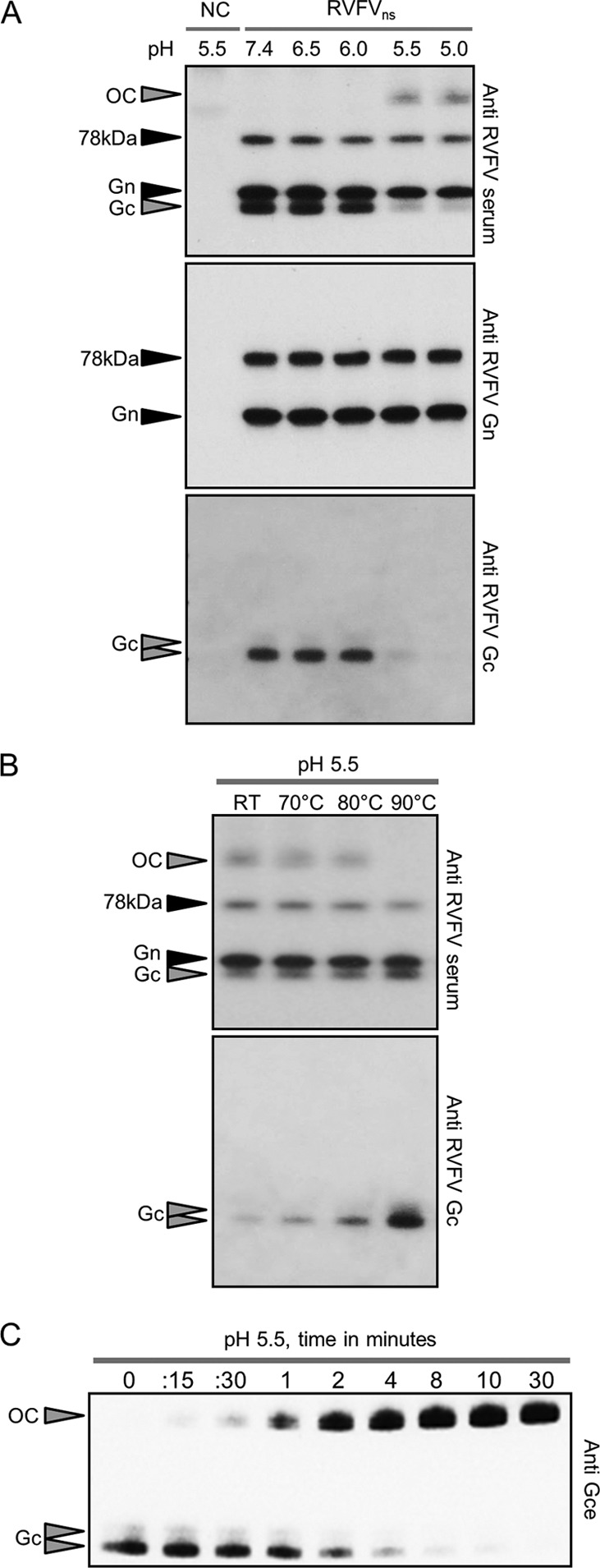Fig 4.

Acid exposure triggers the formation of an SDS- and temperature-resistant Gc oligomer. (A) RVFVns particles were exposed to the indicated pHs for 10 min at 37°C, returned to neutral pH, and subsequently analyzed by Western blotting performed under nonreducing conditions. RVFV glycoproteins were detected with an RVFV antiserum, a monoclonal antibody against Gn, or a polyclonal anti-Gc peptide antiserum. In some cases, Gc migrates as a closely spaced doublet. (B) RVFVns particles were exposed for 10 min to pH 5.5 at 37°C, returned to neutral pH, and heated for 20 min at the indicated temperatures. Samples were subsequently analyzed by Western blotting (nonreducing conditions) using an RVFV antiserum or an anti-Gc peptide antiserum. (C) RVFVns particles were exposed to pH 5.5 at 37°C for the indicated times and analyzed by Western blotting (nonreducing conditions) using a polyclonal antiserum raised against the purified Gc ectodomain (Gce). OC, oligomeric complex; NC, negative control (medium from mock-transfected replicon cells); RT, room temperature.
